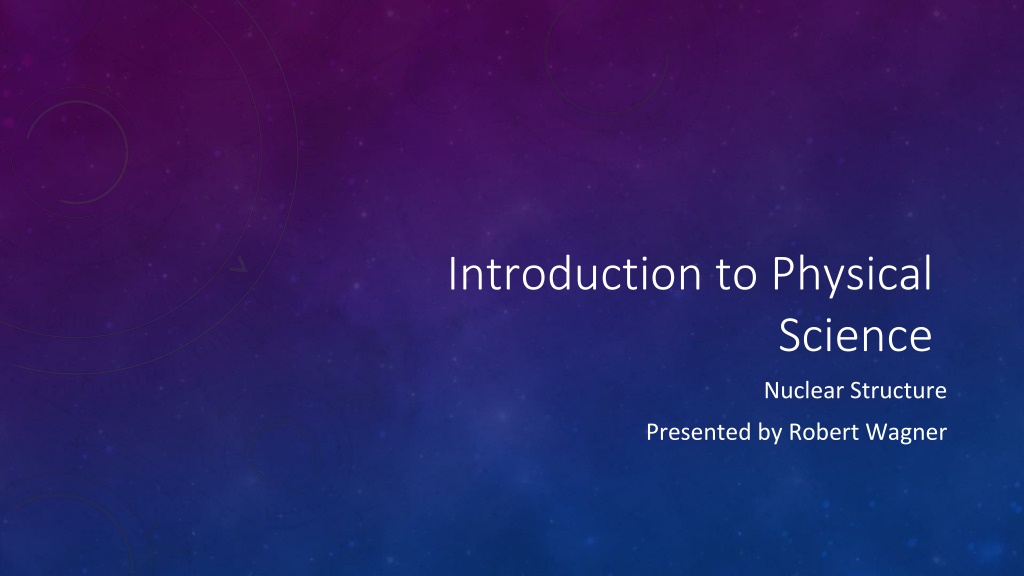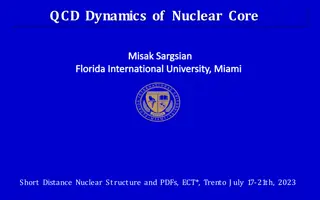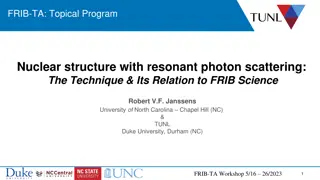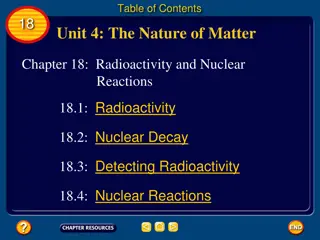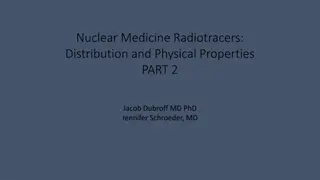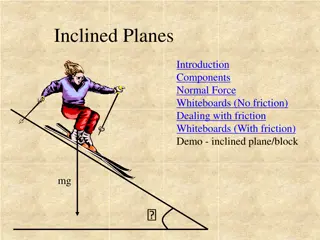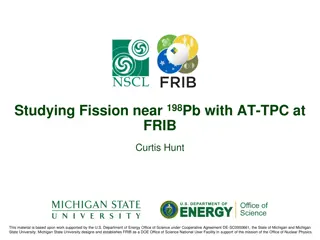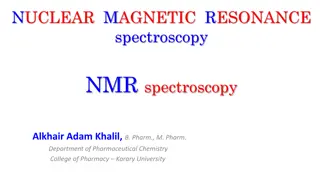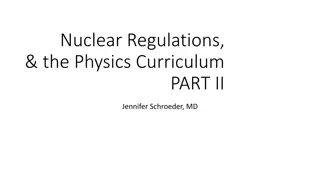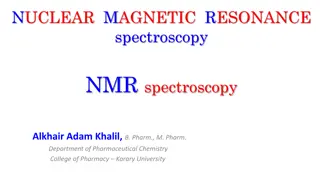Understanding Nuclear Structure and Forces in Physical Science
Explore the fascinating world of nuclear structure and reactions within atoms, delving into concepts such as nuclear force, binding energy, mass defect, and nuclear stability. Discover the intricacies of nucleons, neutron stars, and the Band of Stability, along with magic numbers that contribute to stability in nuclei. Unravel the density of neutron stars and the importance of nuclear reactions in shaping the universe.
Download Presentation
Please find below an Image/Link to download the presentation.
The content on the website is provided AS IS for your information and personal use only. It may not be sold, licensed, or shared on other websites without obtaining consent from the author. Download presentation by click this link. If you encounter any issues during the download, it is possible that the publisher has removed the file from their server.
Presentation Transcript
Introduction to Physical Science Nuclear Structure Presented by Robert Wagner
Nuclear Reactions What we have studied so far involves the electrons in an atom Nuclear reactions are changes that occur within the nucleus of an atom Recall: Atoms have a nucleus consisting of protons and neutrons Z = Atomic number = number of protons A = Atomic mass = number of protons + number of neutrons 14? - A = 14, Z = 6 ; Also called Carbon-14 Nucleons - term to refer to nuclear particles - both protons and neutrons 6
Example ? = 2.4?1.99?1030?? = 4.776?1030?? ? = 13?? = 13000? ? =? ?;? =4 What is the density of a neutron star with a mass of 2.4 solar masses (1 solar mass = 1.99x1030 kg) and a diameter of 26 kilometers? 3??3 ? =4.776?1030?? 4 3?(13000)3 ? = 5.2?1017??/?3
Nuclear Force Strong nuclear force - one of the four fundamental forces of nature Acts between nucleons in the nucleus Much stronger than the electrostatic forces at the very small, nuclear distances Nuclear binding energy Energy produced when the nucleons are bound together These are much greater than the chemical bond energies Mass defect Difference between calculated and measured mass of a nucleus Can be equated to energy through: ? = ??2
Nuclear Stability Only a small percentage of nuclei that exist are stable Fall in Band of Stability Stable nuclei of higher mass will have more neutrons than protons Needed to keep nucleus bound together Radioactive nuclei Around band of stability Will decay in to another isotope Image Credit: OpenStax Chemistry Figure 21.2 CC BY 4.0
Nuclear Stability (2) Nuclei with even numbers of protons and neutrons are more likely to be stable Magic numbers Specific numbers of protons or neutrons are stable against decay 2, 8, 20, 28, 50, 82, and 126 Double magic - Extremely stable isotopes 4??; 8 16?; 40??; 208?? 2 20 82 Image Credit: OpenStax Chemistry Table 21.1 CC BY 4.0 CC BY 4.0
Binding Energy per Nucleon Divide the total binding energy of the nucleus by the number of nucleons Energy gain by nuclear fusion Move from lower mass nuclei to higher mass nuclei Energy gain from nuclear fission Move from higher mass nuclei to lower mass nuclei 56?? - highest binding energy per nucleon Electron volt (eV) used to measure nuclear binding energies 1?? = 1.602?10 19? 26 Image Credit: OpenStax Chemistry Figure 21.3 CC BY 4.0
Example 26 protons, 30 neutrons, 26 electrons Mass defect: = [(26?1.0073???) + 30?1.0087??? +(26?0.00055???)] 55.9349??? = 0.5302??? 56?? has the highest binding energy per nucleon - what is this binding energy (in MeV/nucleon)? (Atomic mass = 55.9349 amu) 26 ? = ??2 = 0.5302????1.6605?10 27?? ? = 7.913?10 11? ?(2.998?108?/?)2 ??? 1??? 7.913?10 11?? 1.602?10 13? = 493.9??? Image Credit: OpenStax Chemistry Figure 21.3
Summary In nuclear reactions, we look at the changes in nuclear structure The nuclear binding energy is the energy needed to break the nucleus in to its components Stable atomic nuclei tend to have even numbers of protons and neutrons
